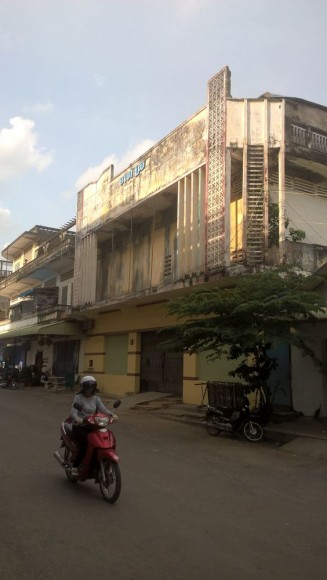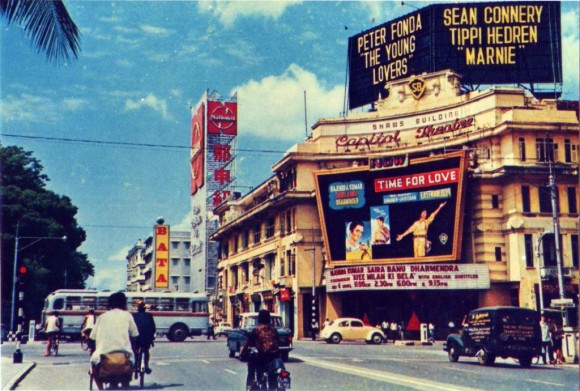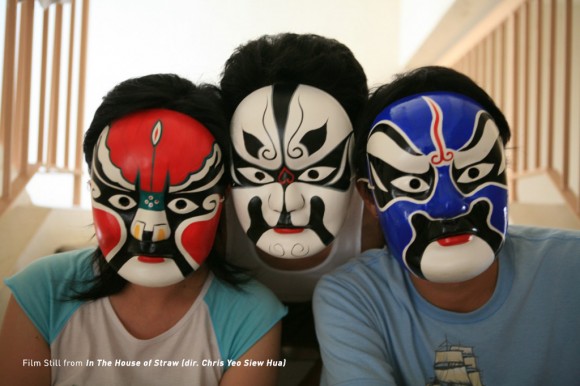NEW WAVES • Dusty Grooves: The Historical in the Cambodian New Wave
Imagine if the only way you knew of the latest films was through giant posters outside the cinemas. No tweets from the stars, no trailers, no online reviews from Rotten Tomatoes. Perhaps you wait to watch it with your date or with your friends. You buy a ticket and sit in the questionable red seats, while someone cranks the film. The film flickers – high definition is a thing of the future. But the story being projected on the screen is larger than life and it takes you out of reality for a moment. And when it ends, you’re left waiting for the next one.
One of the most magical things about watching a film was that the experience was pretty universal. Whether you were in olden day Singapore, sitting in the cavernous hall of Capitol Theatre, or in Battambang Cinema in Cambodia where the sounds of the film swells over the bustle of the streets outside, a trip to the cinema became a special event. Let’s take a little trip down memory lane to take a closer look at the brief histories of these two countries.
1. 1960-1975: Golden Age of Cambodian Cinema
Cambodia enjoyed a Golden Age from 1960 to 1975. With strong support from King Norodum Sihanouk, filmmakers were bolstered to produce large numbers of “pulp fictions” on low budgets. Most of these films made strong references to Cambodian traditions and folktales like Ly Bum Yim’s 12 Daughters (Puthisen Neang Korngrey). The cinematic masterpiece involved a mysterious but kind-hearted hermit, a flying horse, a flying boar, a drunken orgy, and a glass bottle containing the eyeballs of the 12 daughters. It made for amazingly colourful and kitschy posters, which became a distinctive feature of Cambodian films from that era. These posters were painstakingly hand painted onto large canvases with only a pocket-sized “lobby card” for reference. Needless to say, only a very select few mastered the art of poster painting.


Only 30 or so films survived the devastating Khmer Rouge regime. The rest are lost forever.
2. 1940s – 1950s: The Golden Years of Singapore Cinema

The late 1940s and early 1950s was the peak of Singaporean cinema, and people flocked to theatres all over the island to catch films from Shanghai, Bollywood, and even the Middle East. Most of the films were distributed and produced by Cathay Organisation and Shaw Brothers.
The height of locally produced films consisted of Malay films inspired by Bangsawan (Malay opera) and folk tales such as Batu Belah Batu Bertangkup and Hang Tuah. It was during this era that P. Ramlee became a household name, earning his prominence through the sheer number of films in which he acted, sang, and directed.
The studio system dissipated with the independence of Singapore in 1965, leading to a gap in Singapore cinema in the 80s which only regained momentum in the mid-90s.
3. Back to the Present
Now films are so accessible, we don’t even need to leave our beds to watch them. Cinema spaces have disappeared slowly, taking with it the memories of an era. Only two of the six cinemas in Street 2 of Battambang remain. Similarly in Singapore, the majority of film spaces that were popular back in the day have been demolished or converted into other spaces like churches and clubs.


Even here, Capitol Theatre and Golden Theatre (now known as The Projector) have managed to open a new chapter of screening films in their halls. Both film spaces are close to SGIFF’s heart, as they were screening venues for the festival in its early editions, cultivating its own set of memories.
Even as cinema spaces are disappearing, new filmmakers with a sense of cinematic history such as Kavich Neang and Chris Yeo Siew Hua, have emerged. Their work with collectives Anti-Archive and 13 Little Pictures carve out a space for independent filmmaking in their countries and igniting new forms of production. Three Wheels, Kavich’s short film which won the Youth Jury Prize in 2015, awakens the nostalgia for a time that cannot be returned to and his upcoming feature White Building, explores a historical arts space that has nurtured generations of artists, but is facing the grim prospect of demolition.
Join them in the upcoming New Waves discussion as they talk about how their films engage with the past, navigate the current social conditions and pave the way for future works.


NEW WAVES
Dusty Grooves: The Historical in the Cambodian New Wave
Kavich Neang in dialogue with Chris Yeo Siew Hua
Date: Wednesday, 26 July 2017
Time: 8PM – 9.30PM
Venue: *SCAPE Gallery (Level 5), 2 Orchard Link Singapore 237978
Limited seats. Register now via Peatix: http://sgiff-newwavesjul2017.peatix.com


